The Big Question is a semi-regular outing where multiple Daily Grindhouse contributors and friends offer their answers to some burning question. The results…may surprise you.
This week’s big question is…
What Is Your Favorite Genre Film Based On A Fairy Tale?
In honor of GRETEL & HANSEL opening this week, we look at many other horror, sci-fi, action, and other odd genre films that took their inspirations from well-known fairy tales and classic lore. With so many different options to choose from, what’s the one that most stands out to our contributors? What is their favorite fairy tale-turned-genre movie?

Brett Gallman – WES CRAVEN’S NEW NIGHTMARE (1994)
Wes Craven’s ingenious return to ELM STREET isn’t an explicit retelling of a specific fairy tale. However, his decision to weave the story of “Hansel & Gretel” as a motif throughout NEW NIGHTMARE suggests that those old tales are essentially the precursor to modern horror cinema: macabre vessels with which storytellers bottle up the world’s terrors and relay them to children. And what is Freddy Krueger but another boogeyman, one who is even heralded with his own demented nursery rhyme? He’s the witch that once tormented the Brothers Grimm’s plucky siblings; he’s the bloodsucker dreamed up by Bram Stoker and reimagined by F.W. Murnau; he’s the Pied Piper of Hamelin, luring unsuspecting youth to their inevitable doom. Where some have felt compelled to dull the edges off of these monsters (as Craven himself suggested New Line did with their decision to turn Freddy into a comedic icon), NEW NIGHTMARE insists that we must face demons on their own turf, confront them, and then live to tell the tale. The only way out is through, and the only way back is to preserve these horrors on the page or the screen.
Stephanie Crawford — FREEWAY (1996)
FREEWAY has no compunction about its Red Riding Hood roots. From its adult storybook-style opening credits to a cartoon of the fairytale playing during the film to Reese Witherspoon’s Red Riding avatar Vanessa Lutz actually carrying a giant picnic basket, Matthew Bright’s exploitative vigilante black comedy powerhouse plays with its inspiration with the sadistic glee that freeway serial killer Bob (Kiefer Sutherland) employs in his own “work.” While Red Riding Hood remains one of the more gruesome childhood yarns even after decades of corporate pop culture sanitization, seeing it framed against a backdrop of poverty, prostitution, incest, and violence has ensured FREEWAY‘s place as a modern scuzz classic.
The performances are broad and the dialogue blunt-force, but it’s for a threepenny operatic purpose and it’s done intelligently: Just check with the archives of Siskel and Ebert, who each gave it a thumb’s up! Much like the even stranger and sicker sequel FREEWAY II: CONFESSIONS OF A TRICKBABY (which uses gonzo tactics and Hansel & Gretel’s tale to portray recurrent themes of eating disorders and pedophilia), the audience might expect the fairytale DNA to blur the edges of the harsher themes. Instead, it all ends up making the various dank, strange affairs even darker and weirder. Much like those Grimm boys used proto-Leatherface (but make it furry) to sell their message of not talking to interesting strangers I guess, FREEWAY uses big-name stars and clever subversion to help let the audience know that terrible shit will happen no matter what we do, but that’s no excuse to not try to be strong and fuck up a face if need be.
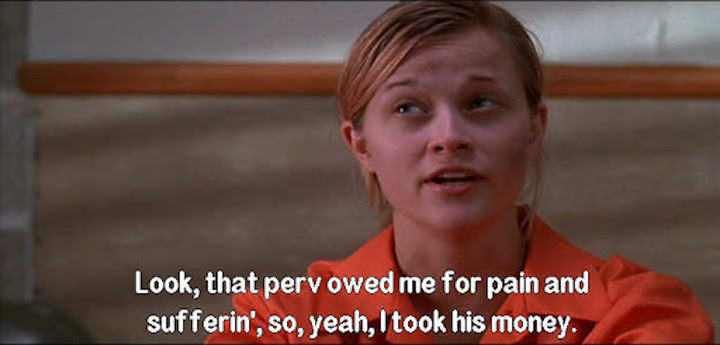
Matt Wedge — PHANTOM OF THE PARADISE (1977)
Maybe I’m pushing the boundaries of what can be considered a fairy tale, but the oft-adapted legend of Faust was given arguably its finest cinematic treatment when Brian De Palma and Paul Williams turned it into a damning indictment of the evils of the music industry in the early ‘70s. A film that should not have worked at all—as it combined De Palma’s visual flair with his cynical script and Williams’ terrific rock opera songs (not to mention his demented performance as the film’s embodiment of the devil). But the storytelling extremes actually are justified by the nightmare logic of the original legend. On a side note, I promise that one day I’ll stop offering up this movie as an answer to everything.
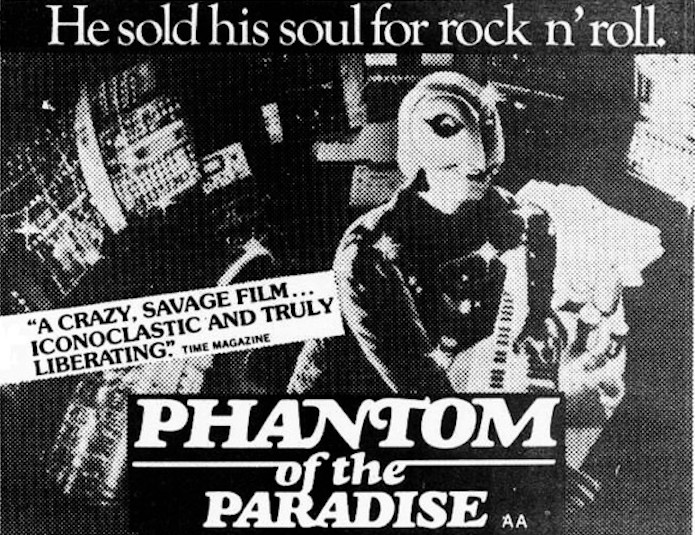
Sarah Jane — VALERIE AND HER WEEK OF WONDERS (1970)
At a screening of GRETEL & HANSEL this week, the director of the film, Osgood Perkins, was asked a question about the influence of Jodorowsky’s THE HOLY MOUNTAIN on his movie. He freely admitted that he did, indeed, borrow from Jodorowsky. There are so many different pieces of fairy tale movies from THE WIZARD OF OZ to Argento’s SUSPIRIA. I wish I would’ve asked him if he had seen VALERIE AND HER WEEK OF WONDERS because I definitely feel there are some parallels.
VALERIE AND HER WEEK OF WONDERS is a 1970 Czech film from Jaromil Jireš based on the 1935 book of the same name by Vítezslav Nezval. It deals with 13 year Valerie (Jaroslava Schallerová) and her coming of age. I wrote about the film previously where I essentially concluded that it is basically impossible to describe. It deals with female burgeoning sexual awakenings which, if you’ve seen other movies dealing with this, doesn’t sit well with the good folks of her village. Like Gretel, Valerie experiences menarche and embarks on her journey into womanhood. Valerie is also experiencing her first stirrings of a sexual nature which might seem more than a little scandalous to modern viewers. Those good folks of her village I mentioned above certainly didn’t like it and Valerie gets accused of being a witch all the while trying to fend off all types of men coming at her. It’s a surreal look into Eastern European folklore.
It’s a trippy film to be sure. This movie, like GRETEL, also borrows heavily from other fairy tales like Little Red Riding Hood and Alice in Wonderland. It’s gorgeous to look at and more than a little disturbing. VALERIE is one of the movies you just have to experience. You’ll definitely want to go along with Valerie’s week long journey into the world of Eastern Europe’s fucked up idea of a fairy tale. The Grimm fairy tales have nothing on VALERIE. Go see GRETEL & HANSEL this weekend and, afterwards, seek out VALERIE, you’ll be glad you did.
Jay Alary — THE COMPANY OF WOLVES (1984)
With the werewolf boom of the early ’80s, film producers were looking for a hot new take on the lyncanthropic sub-genre. Enter a couple of acclaimed prose writers, Angela Carter and Neil Jordan, the latter looking to make his directorial debut, and the former receiving acclaim for her short-story collection, The Bloody Chamber, a celebrated postmodern feminist interpretation of fairy tales. Adapting her titular short story and using elements from her other stories in the collection, Carter and Jordan collaborated to create something that was visually alluring despite budget setbacks. When I was a young and impressionable English major, I dated an older English grad student who introduced me to WITHNAIL AND I and Angela Carter; I will forever be grateful for her contributions to my development as a writer and reader (thanks, Kim!).
Carter was a masterful fabulist, using magic realism and a love of film analysis to brilliant effect in her fiction and non-fiction. Her script for THE COMPANY OF WOLVES was her first, one of only two contributions to cinema (the other is an adaptation of her novel, The Magic Toyshop, in 1987). With Carter’s script, Jordan creates a dark and entertaining series of moralistic tales within a tale, using an acclaimed British/Irish cast (Angela Lansbury, David Warner, Terence Stamp, Stephen Rea) and an impressive young British actress, Sarah Patterson, as Rosaleen, a young girl who dreams of being a Little Red Riding Hood-like girl in the past.
Jordan’s triumph of atmosphere over a meagre budget is notable, as the Gothic forest scenes are breathtaking (and the mixed use of wolves and big sheep dogs isn’t obvious), the costumes are splendid, and the werewolf transformations, though not as memorable as seen previously in THE HOWLING and AN AMERICAN WEREWOLF IN LONDON, are still quite good. Carter passed away in 1991 from lung cancer at the age of 51, robbing the world of her considerable literary talents, while Jordan would revisit similar themes in INTERVIEW WITH THE VAMPIRE and BYZANTIUM. Subsequent fairy-tale adaptations like Catherine Hardwicke’s RED RIDING HOOD (2011) would be indebted to Carter’s fabulist work, even if they didn’t acknowledge her explicitly. The British Blu-ray is region free (and cheap!), so go buy it and enjoy!
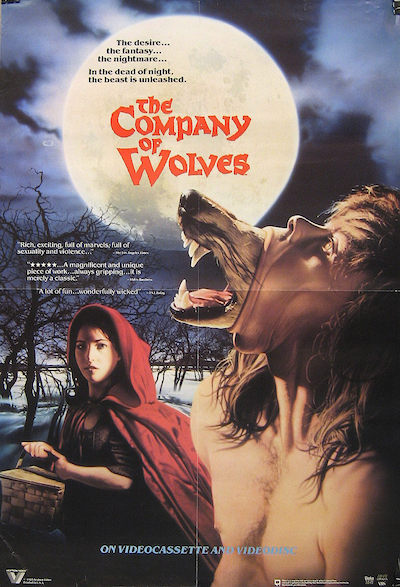
Keef — BEAUTY AND THE BEAST (1946)
In a field of cinematic fairy tale retellings, there are many fantastic examples, and a lot of them have already been covered in this article—THE COMPANY OF WOLVES is a masterpiece; VALERIE AND HER WEEK OF WONDERS is an oft-overlooked gem of Bunuel-style magical realism; SONG OF THE SEA is a beautiful and heartwarming tale of family struggle set against a background of deep and enduring folklore. But for me, the only perfect fairy tale movie is Jean Cocteau’s BEAUTY AND THE BEAST.
Yes, it’s old, and yes, it’s slow, but once you hit the Beast’s castle, the wonderment takes hold in a beautiful way. Jean Cocteau created a truly fantastical fairy tale, and the best adaptation of this Grimm standard to date. Just look at this trailer:
Cocteau understood the fairy tale and its significance better than most: a magical tale, to enchant and inform and educate; to allow a little of life’s woes sneak in while maintaining a sense of childish wonder. In the introduction to BEAUTY AND THE BEAST, he speaks directly to the viewer, in a little monologue that’s worth reproducing in full:
Children believe what we tell them. They have complete faith in us. They believe that a rose plucked from a garden can plunge a family into conflict. They believe that the hands of a human beast will smoke when he slays a victim, and that this will cause him shame when a young maiden takes up residence in his home. They believe a thousand other simple things.
I ask of you a little of this childlike sympathy and, to bring us luck, let me speak four truly magic words, childhood’s “open sesame.”
The movie succeeds– through practical effects, beautiful makeup, and the lilting, beautiful French dialogue– in rekindling that childlike wonder and enjoyment, and still teaches us today. If you haven’t seen it, you must. If you have, it’s always worth a revisit. It’s on Criterion’s streaming service.
Lizz-Ayn Shaarawi – STRANGE BREW (1983)
Shakespeare wasn’t one to shy away from a good retelling, either. Hamlet was liberally borrowed from the legend of Amleth so it’s only fitting that it has been retold many times in such a variety of ways. My personal favorite retelling being STRANGE BREW, where Bob and Doug McKenzie of SCTV fame (Rick Moranis and Dave Thomas, being the Rosencrantz and Guildenstern of the story), bumble their way into jobs at the Elsinore Brewery, which is just down the way from Elsinore Castle, home of the Elsinore family. The brewery is also connected to the Royal Canadian Institute for the Mentally Insane by a series of underground tunnels which come into play later.
Hamlet is gender flipped in that it’s Pam Elsinore (played by Lynne Griffin) who returns home after the death of her father to find her uncle, Claude (Paul Dooley) has married her mother and taken over the family brewery with the help of the evil Brewmeister Smith (Max von Sydow.) Ophelia (now Rosie) is a former hockey player with mental issues and instead of a play within a play, it’s security cameras and a video game which throw light (or electricity) onto the truth. Throw in a Mel Blanc cameo and plot to take over the world using tainted beer and you’ve got the best Hamlet retelling this side of the Canadian border, eh.
Johnny Donaldson — HARD CANDY (2005)
David Slade’s haunting debut feature HARD CANDY can be seen as a sort of modern dress revamp of the Little Red Riding Hood myth—if it was Red herself that was the hunter, not the hunted—and that’s its power. The film is set in an austerely gorgeous modernist chic post-Chris Hansen universe where a fashion photog, played with aw-shucks charm by Patrick Wilson, gets a little too chummy with an underage subject (Ellen Page) and pays a torturous price for his dishonorable interest in girls far too young for a handsome 30 something with an interest in mid-aughts cocaine-disco music acts and chic, primary color decor.
HARD CANDY is a two-hander/tête-à-tête between the oily suburban charisma of Wilson and the righteous, baby feminine rage of Page, both before their careers really took off. The brilliance of Slade’s film is that it keeps you on a topsy-turvy ground for much of its runtime, until it finally plays it cards. Is Wilson really a pedophile getting his just desserts at the hands of a teenaged avenging angel? Or is he a dumb schmuck caught in the web of a junior sociopath glomming on to the disappearance of a local girl so she can get her own homicidal jollies off? There’s a discomfiting theatrical terror to HARD CANDY that’s hard to shake. We vacillate between the two extremes, even as we are lead to a satisfying conclusion, watching as Wilson and Page, both excellent, bounce off each other amidst starkly colorful modernist decor. For a film with such grim and uncomfortable subject matter, HARD CANDY is a disturbingly rewatchable battle of the wills. It gets under your skin, deeply, but gives you the pleasure of watching two ace actors go after each other with skin-crawling gusto.
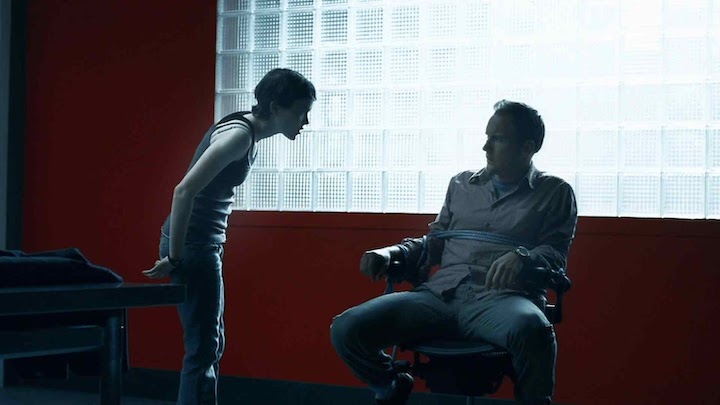
Jason Coffman — GRETEL & HANSEL (2020)
OK, so this probably sounds like cheating, but hear me out: GRETEL & HANSEL is fantastic. I’ve been a huge fan of both previous films by Osgood Perkins (THE BLACKCOAT’S DAUGHTER and I AM THE PRETTY THING THAT LIVES IN THE HOUSE), so in my mind the bar was set ridiculously high for this one. I was a little concerned it would be less “Osgood Perkins” than his previous films since the scale and budget were probably considerably larger than any he had to work with before, but that is definitely not the case. Many films based on fairy tales tend to either be specifically made for younger audiences or completely on the opposite end: You’re either getting FROZEN or WILD AT HEART, basically. But Perkins draws from unexpected sources like Russian and Czech fairy tale films of the ’60s and ’70s, with their vibrant handmade fantasy worlds and a much more palpable sense of danger than American fairy tale films tend to have. Further, Perkins keeps the pace consistent with his previous work, which will no doubt frustrate some viewers wanting more of a straightforward thrill ride.
This is a gorgeously shot, beautifully scored, glacially paced horror movie with a sly sense of humor that trusts its audience is willing to go along on its leisurely ride into the dark. It’s honestly something of a shock that the film managed to get a PG-13 rating, but there’s nothing here that younger audiences wouldn’t encounter in a real book of Grimms’ fairy tales. It’s thrilling to imagine younger viewers getting their eyes on this film and having their minds blown by its creepy atmosphere and impressive aesthetics. There are certainly numerous great fairy tale films out there for audiences of all ages, but GRETEL & HANSEL is destined to be an all-timer for jumpstarting the interests of budding cinephiles.
Cati Glidewell — FREEWAY (1996)
No question. Foul mouthed Little Red Riding Hood that tells that wolf where to go. One of my favorite performances from Reese Witherspoon and it stands the test of time with the entertainment value. Still laugh at that courtroom scene and the one liners Reese (Vanessa) throws at Kiefer Sutherland (Bob). Even the ending has a diabolical yet humorous twist.
Rob Dean — RUNNING SCARED (2006)
Firstly, it should be pointed out that this is the 2006 thriller called RUNNING SCARED, not the 1986 buddy cop movie of the same name. Though, in fairness, both are under-discussed movies with a lot more going for them that should be better known. From writer/director Wayne Kramer, who made THE COOLER and wrote the screenplay for Renny Harlin’s bugnuts MINDHUNTERS (2004), comes an” into the night” tale of Joey (Paul Walker), a criminal enforcer who is given a gun to dispose of after an intense and fatal drug operation goes sideways, his battered neighbor child Oleg (Cameron Bright), who may be sick of learning the wrong lessons at the abusive hands of his father, and Teresa (Vera Farmiga), Joey’s wife and nucleus that holds her family together amidst all this crime and violence. After the set-up of the situation, the rest of the film are these three characters entering into various weird and horrific situations as they race against more sinister forces that seek to do all sorts of harm on each other.
That sounds more like a Tony Scott ‘90s film (which it kind of is) than a fairy tale, but there are lots of allusions to the basic monomythical set-up of most fairy tales. The innocent is placed on a path and told not to stray from it, yet constantly does—and the shadows of the world are quick to descend. While all of RUNNING SCARED plays out like a protracted fairy tale of going places and learning bits of useful information as the climax draws nearer, there is one segment that is wholly unlike the others in which the fairy tale allusions become overt and children are faced with monstrous wolves in human clothing who underline Kramer’s points about how eager the abyss is to swallow us whole.
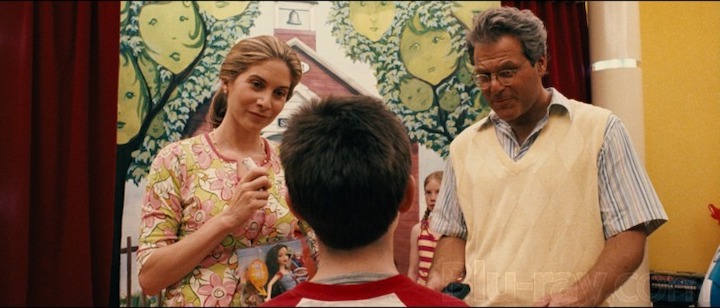
John Reents — INTO THE WOODS (2014)
Yes, musicals are genre films! Rob Marshall’s INTO THE WOODS (2014), based on the 1987 Broadway musical, combines the stories of Cinderella (Anna Kendrick), Little Red Riding Hood (Lilla Crawford), Rapunzel (Mackenzie Mauzy), and Jack (Daniel Huttlestone) and the Beanstalk with the tale of a Baker (James Corden) and his Wife* (Emily Blunt), who are seeking to break a Witch’s (Meryl Streep) spell. Most of this (we learn about Rapunzel later) is explained in the title song, a 15-minute sequence that is a master class in songwriting by Broadway master Stephen Sondheim and screenwriter James Lapine, adapting their stage work with a minimum of changes. “Into the Woods” contains the most tuneful and funny exposition you may ever hear.
As the characters cross paths with each other, their tales intertwine, everyone becoming a player in someone else’s story: The Witch who cursed the Baker and his Wife is also keeping Rapunzel trapped in a tower. The prince (Billy Magnussen) who falls in love with Rapunzel is brother to the prince (Chris Pine) who meets Cinderella at the ball. The Baker and his Wife sell Jack the magic beans that grow into a giant beanstalk (and which were stolen from the Witch by the Baker’s father).
Eventually, the wicked are punished and the good reach some version of “happily ever after.” Until a Giant (Frances de la Tour) from the sky destroys the peace by attacking their kingdom. As the world – and the woods – falls apart around them, the characters are forced to confront the consequences of their wishes coming true. The film becomes a deconstruction of the stories many of us grew up with. But funny. And with songs. Great songs.
In the wake of tragedy, the (remaining) characters turn on each other in “Your Fault,” a tour de force of lyric writing, even for Sondheim. (“It’s his father’s fault / That the curse got placed / And the place got cursed / In the first place!”). Most of these same people later comfort one another in the lovely, clear-eyed “No One Is Alone.” It’s a beautiful song with a timeless message: for good and for bad, whether we like it or not, we’re all in this together.
*Those are their names. Everyone who doesn’t have a name in the original story doesn’t get one here, so we have Baker, Baker’s Wife, Witch, Cinderella’s Prince, Rapunzel’s Prince, Jack’s Mother, Maid by the Fire, Stormtrooper, “Hey!! It’s Enrico Palazzo!” etc.
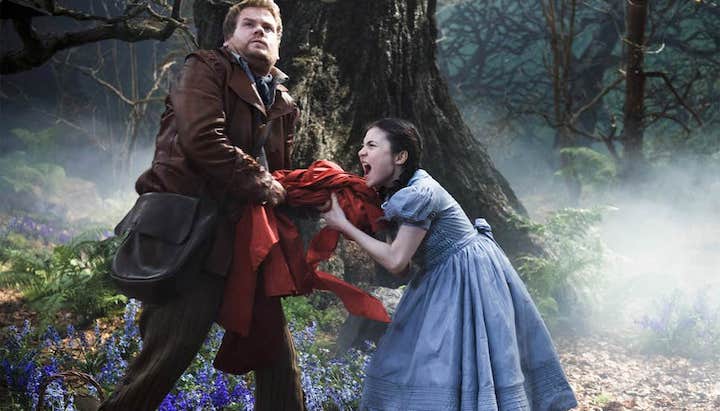
Samantha Schorsch — THE LURE (2015)
Uh oh it’s the resident Pole with the Polish horror again.
Sirens and mermaids are a massive part of folklore in Poland, (see, the entire WWII myth and statue of Sirena in Warsaw) so it was only a matter of time before The Little Mermaid got adapted in some format. Enter THE LURE.
In THE LURE, two siren sisters are found by a woman lurking around their lake. Seeing dollar signs in their beautiful voices, she takes them into the city and to a bordello where they perform in cabaret shows and are sexually exploited by the men who now claim ownership over them. Their taste for the flesh of evil men not quelled by their new lives, one sister continues to bait, kill, and consume the clients around her—while the other begins to fall in love with one of the sons in their bordello residence. This quickly becomes problematic as she not only begins to starve and mutilate herself and her fin to appease him, but she is beholden to the magic of her kind which dictates that if a mermaid gives herself to a human who breaks her heart, she will die and collapse into sea foam.
THE LURE is a strange blend of horror and musical, with the cabaret numbers fully performed as well as certain key scenes and moments reaching the level of full-on Broadway, but somehow it works. It’s trippy, violent, beautiful, and deeply melancholic all at once and the visual representation of the sirens is unlike any other on screen depiction. It’s definitely not Disney’s version of THE LITTLE MERMAID, but in my opinion is actually very close to Andersen’s original, much darker and more painful story than most.
If you have time for some weird Polish shit, I would wholeheartedly recommend.
Jon Abrams — PINOCCHIO’S REVENGE (1996)
I had been working my way through the filmography of lesser-beknighted horror auteur Kevin Tenney (WITCHBOARD, NIGHT OF THE DEMONS, WITCHTRAP, NIGHT OF THE DEMONS II) when I arrived at this gem… of sorts. It’s about a mother whose small daughter becomes enchanted by a wooden doll which belonged to a since-dead murderer. As you might guess, more murders happen, with a pit stop along the way for an awesome shower scene on the part of the girl’s babysitter. (The murder doll is a creep, and so unfortunately am I, sometimes) A young Verne Troyer plays Pinocchio in the practical sense. Meanwhile, the voice was performed by Dick Beals, who was Davey on Davey & Goliath. Now that I put that last little morsel of trivia down in black-and-white, a renewed eeriness is flooding in.
This movie clearly doesn’t happen if CHILD’S PLAY and LEPRECHAUN were never made. But those things had to happen—it was fated—and therefore so too did PINOCCHIO’S REVENGE. It’s not a fairy tale at all, really, unless the moral is that you shouldn’t spend too much time watching movies with me, lest you end up stuck watching something like PINOCCHIO’S REVENGE late into the night.
What about you, gentle reader?
What is your favorite genre film based on a classic fairy tale?
Let us know in the comments below!
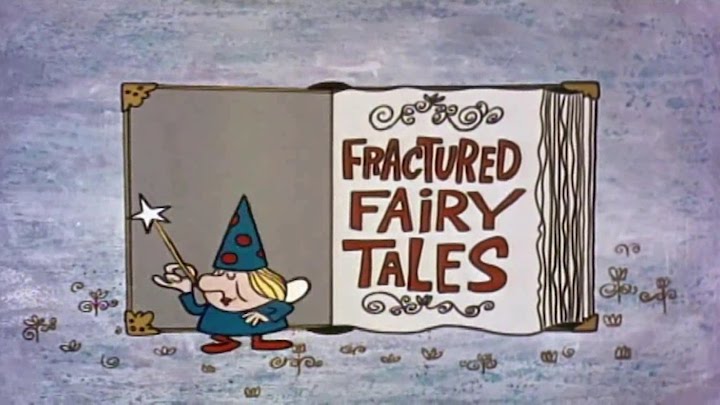
Tags: Angela Carter, Angela Lansbury, brian de palma, Brothers Grimm, David Slade, Fairy Tales, Faust, Gretel & Hansel, Jean Cocteau, Kevin Tenney, Kiefer Sutherland, Little Mermaid, Little Red Riding Hood, Osgood Perkins, paul walker, Pinocchio, Reese Witherspoon, rick moranis, Stephen Sondheim, The Picture Of Dorian Gray, Valeria and Her Week Of Wonders, Vera Farmiga

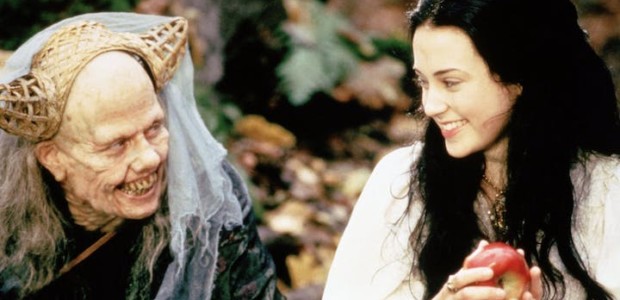
No Comments